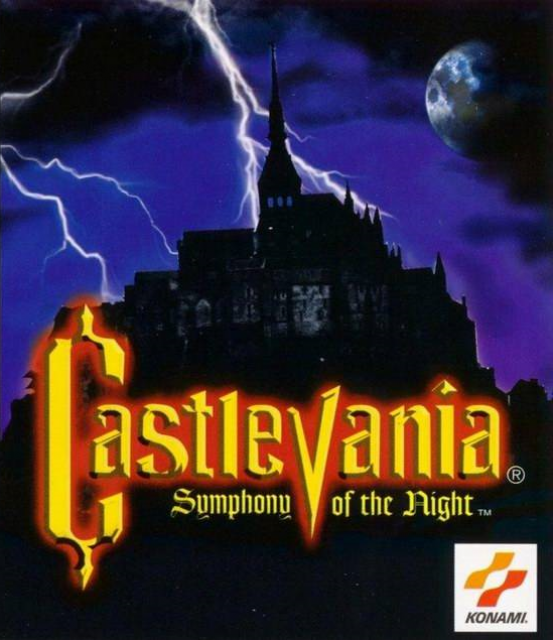Sublime.
Some people will try to sell you on the idea that Castlevania: Symphony of the Night is still the greatest game ever made. Disregard these people. Enter Castlevania without expectations and grandeur and you'll find that this game is still shockingly fresh, as many modern games now considered somewhat "innovative" are largely taking cues from this excellent game.
For the uninitiated, Symphony of the Night is the first exploration-focused title in the Castlevania franchise, the game that adds the "-vania" to the "Metroidvania" title. The story (what little there is) follows Alucard, the son of Dracula and star of Castlevania III: Dracula's Curse, as he returns to Castlevania, which has reappeared. The castle itself plays with a bunch of really fun environments, with all of the areas having some great variety. It's also the title to bring back RPG elements; Alucard levels up as he kills monsters throughout the castle, increasing his strength, defense, intelligence, and luck and collects weapons and skills to take on his enemies.
One of the things that makes Symphony of the Night unique is how little it shares with the player. While the new Xbox 360 "how to play" screen teaches the player about skills and the game's controls, the game itself shares almost zero information. A number of extremely important and powerful abilities are hidden from the player until they perform the action on their own, which was probably extremely enticing at the time of the game's release. Unfortunately, like other discovery-focused RPGs such as Demon's Souls, Symphony of the Night has been effectively "solved" at this point, and conversation relating to actual skills in the game have been reduced to "you should go here and get x sword." While the things to discover are pretty awesome, it's sad that one of the original features this game offered has been reduced to finding a walkthrough.
Even without the game's lack of information, I might recommend resorting to a walkthrough all the same. The combat in Symphony of the Night can be extremely unforgiving, and the early hours of the game will involve losing up to ten or twenty minutes of progress pretty regularly. That said, the combat in the game is extremely satisfying, with fighting game elements of spacing and proper use of magic being absolutely required for many of the game's early and late boss encounters. The game does become a bit too easy at times; notably, the later first half and the game's finale can be extremely easy for players who explore properly, and one sword in particular seems to only exist to break the entire game (excluding one optional boss.) This is not so much a complaint as a note, though said game-breaking sword roughly nullified the final encounter.
Of course, it would be remiss of me to discuss Symphony of the Night without acknowledging what is probably its most famous feature, the Inverted Castle. Similar to a "true ending" in a game like Persona 3 and 4, it is possible to close Symphony of the Night in about 4 or 5 hours of successful progress, but a proper playthrough will roughly double the length of the game by flipping Castlevania upside-down and creating an entirely new dungeon. It's an impressive feature that will really test the skills of the player, but too much time is spent exploiting some of the game's weaker A.I., grinding mobs for rare loot, or traveling in one of Alucard's handful of alternate forms.
The game doesn't make much effort to engender love for its characters. The game opens with a poorly acted Richter Belmont (voiced by David Earnest) squaring off against an excellently acted Dracula (Scott McCulloch), calling back to the end of Castlevania: Rondo of Blood. Alucard (Robert Belgrade) is then quickly introduced without much fanfare, and eventually he encounters Richter's assistant/sister-in-law Maria Renard (Kimberly Forsythe), who unfortunately sounds as though she were recorded in a far cheaper sound booth. Interactions with any character other than Dracula are rudimentary at best and amateurish at worst. McCulloch absolutely dominates the two scenes in which he appears, though, and injects a LOT of character into an otherwise bland cast.
The game itself, however, is not without character. Its sprite graphics are excellent top-to-bottom, and while one might ask for an HD remake that cleans up most of the sprites one day, the original game looks pretty darn awesome. Bosses and environments look especially nice, and Alucard just moves really nicely. There are a handful of awkward animations that occur when characters stand in places they probably shouldn't, but the game's aesthetic contributes to a moody horror-fantasy that simply rocks. The music is similarly fantastic, rotating between orchestral horror opulence, awesome synth metal, and slick synth jazz guitar. While it would take spending some more time with the game than its rough 10-hour run time to really have some of the songs dig into my brain, the ones that have are really great.
Symphony of the Night is really just darned good fun. It's not the perfect game some might purport it to be, but that's simply not a fair expectation. The concept of playing four or five more Castlevania games based upon this one is an exciting one after finishing Symphony of the Night, and I think that's pretty much the highest praise I can lay upon it. This game is absolutely not to be missed, and, for fans of exploration platformers, should be the standard to which one holds the genre.
